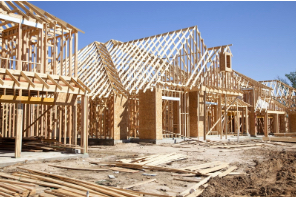The first step in starting a Construction Company is to register with the state. The process is different in each state and may include filing articles of incorporation and business license applications. This will allow your company to sell and operate services to customers. Registration will also ensure that your company is listed on the state business registry. Read on to learn more about registering Construction Companies.
Building a strong brand will help you distinguish your business from your competitors. This process is much more effective if you know your target audience well. Building a strong brand will also help you retain customers. If you serve a smaller segment of customers, it will be easier for you to achieve profitability. The best way to differentiate yourself from competitors is to focus on providing the best possible service to a specific segment of customers.
When identifying a niche market, you need to first determine the characteristics of your ideal customers. You can start by talking to customers and conducting surveys. You can also monitor popular search terms and incoming requests. It is also a good idea to pay attention to competitors and identify which niches they are targeting.
Once you have determined your target audience, you need to research their needs and pain points. You can do this by using Google searches, keyword research, and mind mapping. Another good way is to join groups that are relevant to your target market. Then, you can offer to help people with their problems. Once you know your target audience, you can start testing your product or service. You can also organize Meetup groups and meet your target audience in person. You can also use tools like SurveyMonkey to conduct surveys.
To make your business successful, you need to create a solid marketing plan. The plan will help you allocate resources and identify opportunities and threats. It will also help you develop an effective strategy for delivering the right advertising message.
In a company, there are two basic types of organizational structure. One type is functional, and the other is hierarchical. A functional organizational structure allows for greater specialization and a better division of labor. The other type is hierarchical, where the top management manages all aspects of the company.
An organization’s top-level position is held by the owner or CEO. There are usually a few other positions below the CEO, including project managers, supervisors, and workers. The organization’s hierarchy determines how decisions are made and how communication flows throughout the company. The amount of authority that each role has depends on the size of the business and the preferences of the owner. However, the top-level position usually reports to the owner/CEO, who is responsible for the overall growth and profitability of the company.
Each role has specific responsibilities and is described in an org chart. This structure is helpful for employees and stakeholders to recognize their roles and responsibilities. For example, the finance department manages the company’s cash flow and ensures that there are sufficient funds to cover day-to-day payments. Meanwhile, the purchasing department purchases materials and supplies for projects and for the company’s day-to-day needs. These departments compare different suppliers to ensure they have the best price and quality.
A well-designed organizational chart illustrates how each position supports the business. Although the names may change as the business grows, the functional roles remain constant. One common mistake made by construction business owners is to think only of their current employees when drafting an organizational chart. It’s best to think of your future employees’ job roles and responsibilities.
Labor is a significant part of a construction company’s overhead. It is estimated that a small team of construction workers costs $640 per person per day. That amount does not include payroll taxes, benefits, meals, insurance, and employee supplies. In addition, a construction company will also need to obtain licenses and permits. Failure to obtain these will leave your business open to lawsuits and could even prevent it from operating. The cost of these permits varies by state and local regulations. However, the national average is approximately $430.
Labor productivity in construction is often measured by the output produced per labor hour. While the number of labor hours used to accomplish a task is subject to a large degree of management influence, it is important to remember that this measure is more of a measure of overall operating efficiency than the capabilities of labor alone.
Labor costs are typically between 20 percent and 40 percent of the total cost of a construction project. However, these percentages may vary from one project to another, which makes it important to use construction accounting software to track labor costs. It is also important to have a clear idea of what your final labor costs are for each project before you begin the process. It will help you to keep your construction budget on track and avoid overspending.

